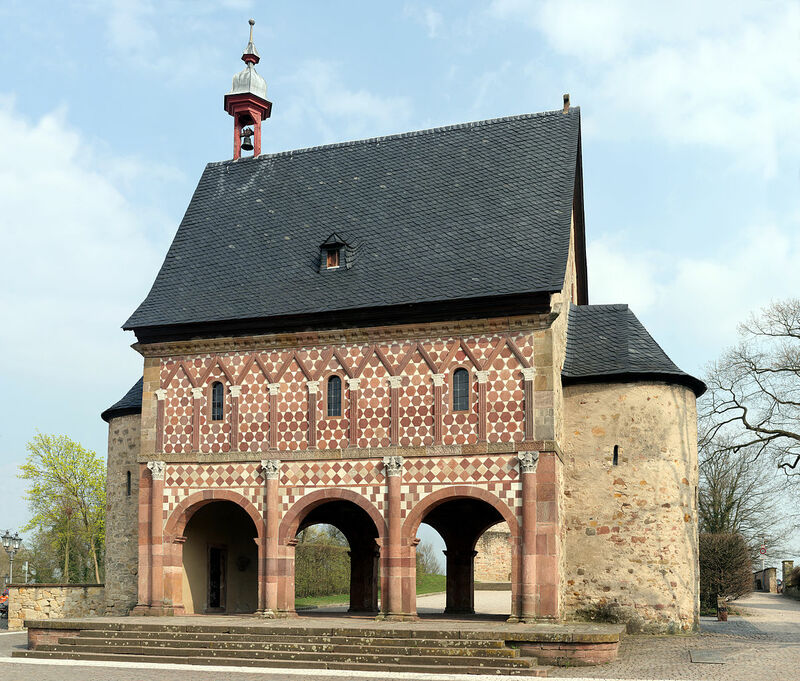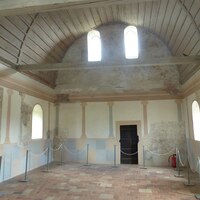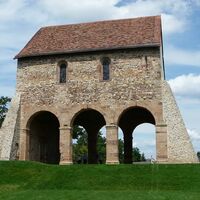Arched hall at Lorsch
Type:
Monasteries,
Monuments,
Wall paintings
Date:
ca. 780 or ca. 880
Location or Findspot (Modern-Day Country):
Germany
Description:
This freestanding arched structure is all that remains of the Benedictine abbey of Lorsch, which was founded by 764 and which Charlemagne (d. 814) placed under imperial patronage. The late eighth- or late ninth-century triple-arched structure is usually called a gatehouse, but it does not seem to have been connected to an encircling wall (the traces of a medieval wall at Lorsch postdate this building). Its form echoed that of triumphal arches in the Roman Forum, and the colorful cladding with brown sandstone tiles also derives ultimately from Roman revetments imitated north of the Alps. The two round stair towers on the sides lead to a vaulted upper story (10 × 6 m) frescoed with fictive columns that evoke an open loggia or portico. A twelfth-century source says that judicial functions at Lorsch were undertaken in a separate building, which may have been the so-called gatehouse.
Lorsch amassed an enormous library of some 500 codices on theology, historiography, monasticism, grammar, and other subjects, most were copied in the abbey's own scriptorium in the ninth or eleventh centuries. The monastery retained its preeminence until the thirteenth century and only began its final decline in the seventeenth.
Lorsch amassed an enormous library of some 500 codices on theology, historiography, monasticism, grammar, and other subjects, most were copied in the abbey's own scriptorium in the ninth or eleventh centuries. The monastery retained its preeminence until the thirteenth century and only began its final decline in the seventeenth.
Relevant Textbook Chapter(s):
5
Repository and Online Resources:
• The arched hall at Lorsch is a UNESCO World Heritage site.
• See addtiional images of the hall on the kornbluthphoto website.
Image Credits:
Wikimedia Commons



